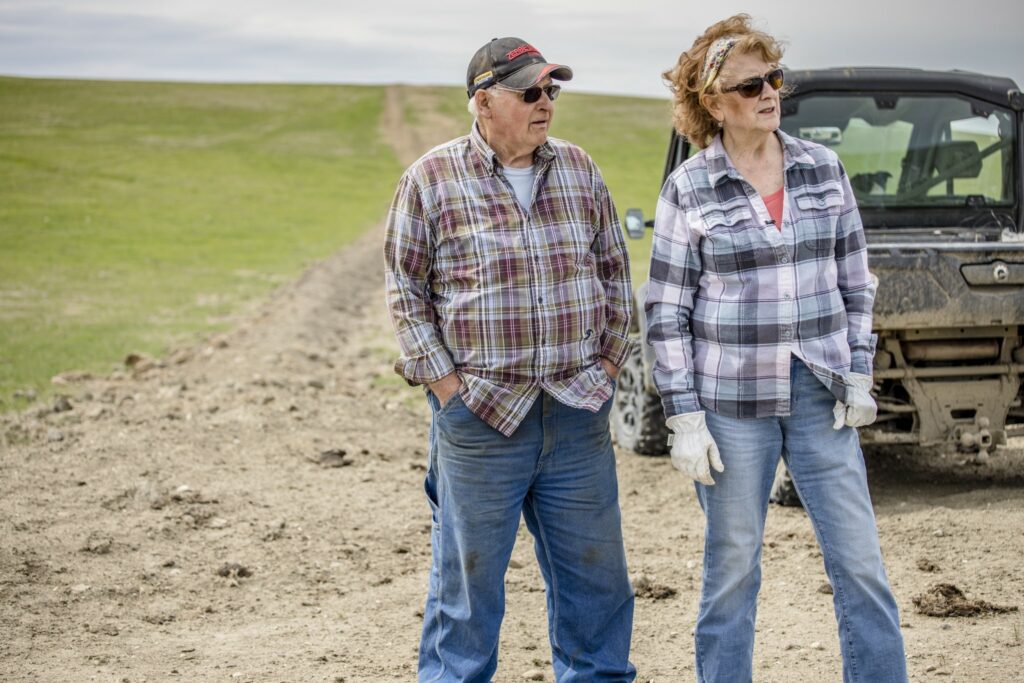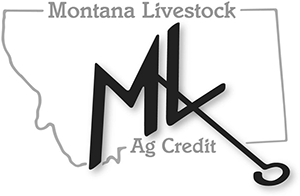Grass is to cattle as water is to conservation. Ironically, that analogy could be shuffled in any order and still carry the same meaning. To conserve grasslands, it is critical to maintain the ability to stock pasture with cattle, and to do so, access to stock water is necessary. That is why groups like the Ranchers Stewardship Alliance (RSA), a non-profit based in Malta, Montana, invests in assisting ranchers with water development through their conservation program.
These water projects are meaningful to ranchers on any given year, but as drought choked the northern portion of Montana the last two summers, one particular pipeline on the Jim and Dee Shettel Ranch north of Dodson has been called both a “God send” and a “blessing.”
“Jim has been very on top of the water situation from the day he bought this place,” Dee said of her husband. “He’s built a lot of dams out here and we’ve just kept water on the place as best we could. But you can build all the dams you want, but when there’s drought, there’s just no water and this is going to make a huge difference.”
“We would have had to sell more cows. Most of our pastures are watered by reservoirs or pits or something, but it's years like this year and last year when they go dry and that kind of got us started drilling wells, so we had water when the when the reservoirs went dry.”
Jim Shuttle
With financial assistance from RSA, Ducks Unlimited (DU), U.S. Fish and Wildlife Service (USFWS), and Montana Fish, Wildlife, and Parks (MT FWP), the Shettels drilled a 700 foot well and piped the water across two sections of expired CRP (Conservation Reserve Program) pastures to several tanks. Thanks to the drought, that entire tract of land would have been unusable for cattle had the new waterline not been installed.
“We would have had to sell more cows,” Jim said. “Most of our pastures are watered by reservoirs or pits or something, but it’s years like this year and last year when they go dry and that kind of got us started drilling wells, so we had water when the when the reservoirs went dry.”
Investing in water infrastructure on the ranch has been a long process that was only expedited by the assistance of the conservation groups. When Jim and Dee drilled some of the first wells, they ran pipe above ground to transport the water.
“Money was not real fluent right then, so we just did what we had to do,” Dee recalled. “Jim unrolled black pipe and in places Jim would dig it in just a little bit because it gets so hot. Then, we had tanks we would fill, then water would run from that into the water troughs. We just did what we had to do to move the cows around and graze everything, so it was grazed efficiently. We’ve come a long way since and it’s nice to have the water lines in and the nice tanks and I’m looking forward to doing even more of that.”
The recent water project aided by RSA and partners not only meant cattle could graze the northern portion of the ranch, but it could be done in a more efficient manner as well. Dee explained the importance of tank placement and distributing water across pastures in a way that allows cattle to graze it evenly. Having water available in more places also means the cattle are moved more often.
“We don’t believe in overgrazing, and we’ve always worked at that,” Dee said. “Basically, we’re just trying to do a better job of grazing.”
Maintaining the health of the range is of the utmost importance to Shettels and it’s a priority they have been working on since Jim returned to the ranch in 1957. At that point, most of the ranch was grass. Then, Jim’s father made the decision to farm nearly all the land that could be accessed because “my dad was a farmer and by gosh, you farm, that’s what you do,” Jim said with a laugh.
“Well then big winds come and the dirt flies,” Jim said. “Then, you start thinking about conservation and start stripping it down in narrow strips. Then, we decided to seed it all back to grass and that’s when you really get into the conservation more.”
Jim said one of their main conservation goals, and one aided by water systems that keep livestock on the land, is to “keep the land from blowing away.” That’s also why RSA, DU, FWS, and MT FWP invested in water lines on the Shettel operation”
“The wildlife concern was that their entire place is almost primarily expired CRP or former cropland that could easily be converted back to cropland from grass, with no USDA (United States Department of Agriculture) penalty,” RSA/PF Conservation Coordinator Martin Townsend said. “If we can do things on expired CRP like add stock water and grazing infrastructure, we’re more likely to assist those producers in keeping that grass in grass long term.”
Jim and Dee first encountered Martin in his former role at the local NRCS (Natural Resources Conservation Service) office when they inquired about their water plan. Several attempts at the NRCS fell just short of securing funding for the Shettel’s project.
“We had come up against the deadline with the producer needing to do their project, so we then turned to the partnership that RSA has grown to put together, and through a combination of partners, Fish and Wildlife Service and Ducks Unlimited, we were able to provide a well, Montana Fish, Wildlife and Parks was able to provide the pipeline and then Rancher Stewardship Alliance was able to provide the tanks for their stock water system,” Martin explained.
Dee called these groups “the frosting on the cake” who were able to bring their project to fruition all because they share a common goal.
“They’ve been really easy to work with and it helps that we all have the same focus – to keep the grass on the land and keep the ranchers going and hopefully it continues to be that way,” Dee said.
The conversion from farm fields to grass, with help from the addition of water, has not just improved the stocking rate on the ranch, but kept the land healthier, ensured an abundance of diverse wildlife, and ultimately, “feeds our livelihoods as ranchers,” Dee said.
“We’re really blessed to have this life, it’s very special that we get to live here and do what we do,” Dee said. “They don’t make any more land so to me it’s a precious commodity.”
“It’s just the idea of keeping everything the way it was so it’s here for great grandkids and great, great grandkids,” Jim echoed.
Knowing there is a “community of conservationists” working together on projects like Shettels makes Dee “feel more confident that our goal will be reached,” she said. And for Jim and Dee, that goal is to keep the ranch going for their family and the upcoming generations.
“I feel like we’re on the same page,” she said. “We really appreciate being part of something where we’re all looking down the same road and we all have the same game plan. It’s really nice to talk to people who appreciate the same things you do and want to keep the land healthy.”
Forging these relations has not only been advantageous for Shettels in that they are able to invest more in the ranch and secure its long-term viability, but also learn from individuals from different walks of life in the meantime.
“I’ve learned that these conservation groups know there has to be agriculture along with it and that’s interesting because years ago, we thought they just wanted wildlife and those groups had that stigma to them. Then to learn that they were interested in helping keep the ranchers going, we think the tradeoff is darned good. We do what we can to help what they’re doing and they’re helping us.
“You have to have a broad mind and an unselfish view of what makes this world click. And this ranching world needed some help, and these guys came along and not only taught us a lot of different things, but hopefully we’ve shared our knowledge, too,” Dee concluded.
by Kayla Walker for Ranchers Stewardship Alliance




